Need some great ideas for how to use flaxseed beyond smoothies? Check out these 18 easy ways to use flax seeds recipes in everyday cooking! It won’t change the flavor of your recipes at all, and it’s healthy & affordable. Plus, it’s perfect for vegan lifestyles!
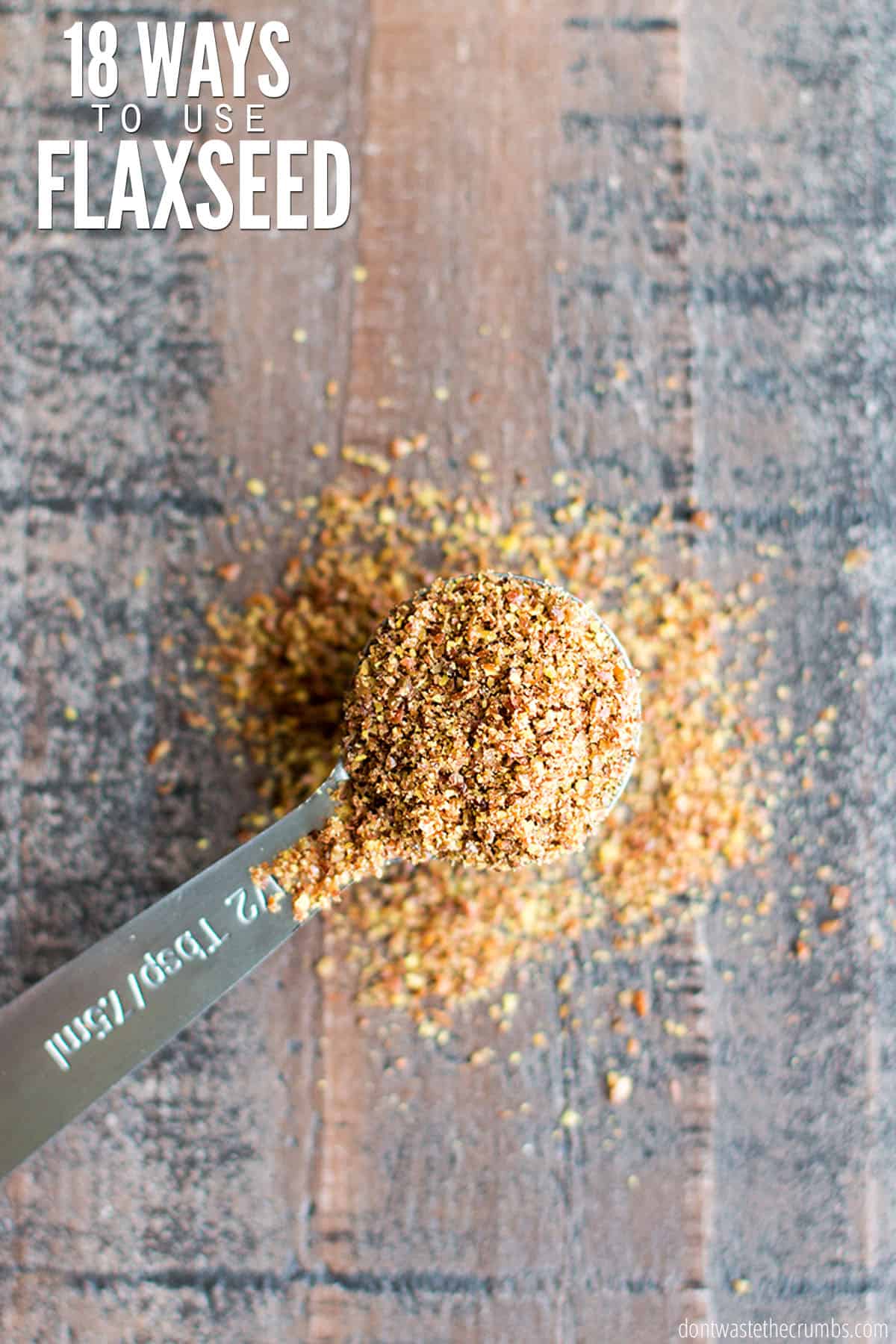
I don’t buy something unless I can figure out at least 2 different ways to use it.
This is my approach to small kitchen appliances and the latest trend in foods. I don’t care how healthy it is – if I can only use it for one sole purpose, I’m not buying it.
That’s one reason why I’ve come up with a huge list of ways to use flax seed. Believe me, there are so many things you can do with flax! But why would you want to use flax seeds in recipes? It’s:
- Healthy
- Perfect for vegan lifestyles!
- A great replacement for eggs in recipes
- Versatile
- Inexpensive
18 Ways to Use Flaxseed
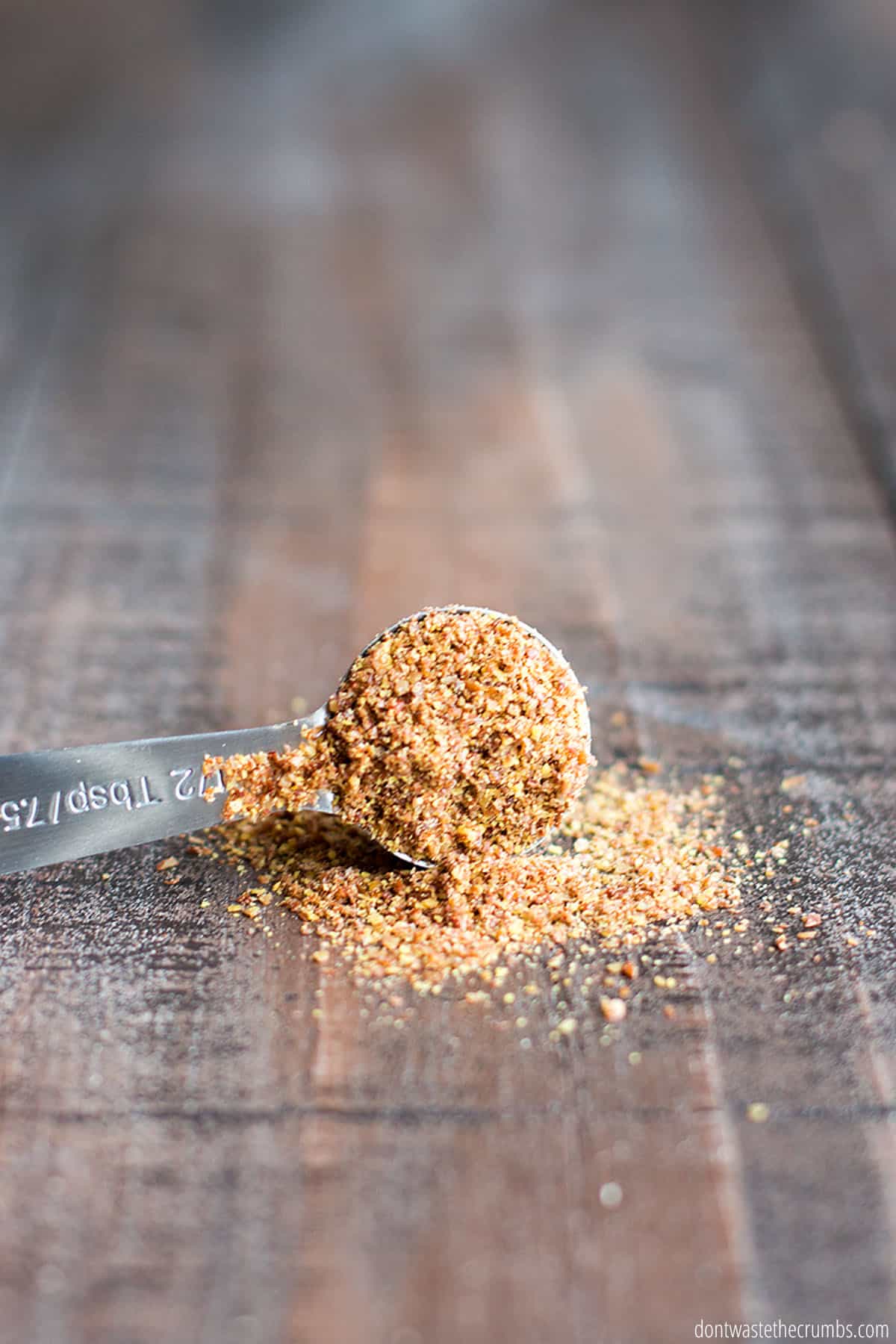
1. Make An Egg Replacer
Whether you’ve run out of eggs or are baking for someone who’s allergic to eggs, you can use flaxseed as a replacement for eggs in many recipes that typically call for eggs.
To make a flax egg:
- Mix 1 tablespoon milled flaxseed with 3 Tablespoons warm water.
- Let it rest for 5-10 minutes to thicken. (Read the full tutorial here.)
- Flax egg doesn’t bind and stiffen like eggs do in recipes, so it’s not always a 1:1 substitution. However, using flax seeds recipes as an egg replacer works really well in recipes like pancakes, brownies, muffins, cookies and quick breads.
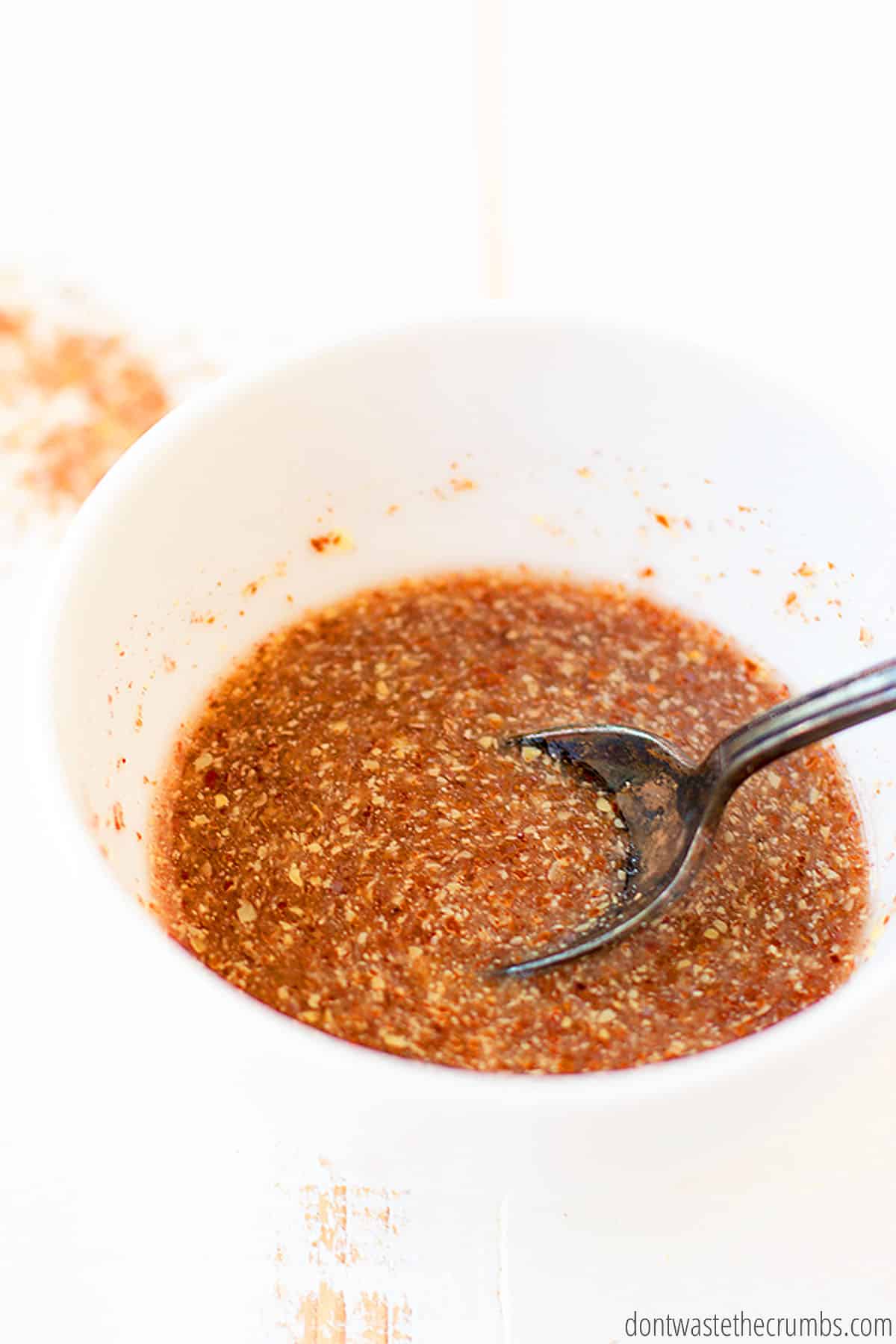
2. In Breaded Chicken Recipes
Beef up the nutritional value of your breaded chicken or crusted tilapia by adding a flax seeds recipe to the coating mixture.
A good starting point is 1-2 Tablespoons flaxseed per cup of breadcrumbs. Flaxseed has a slightly nutty flavor and would compliment any coconut or herb based coating. It would be good on homemade chicken nuggets or almond crusted chicken.
3. Make an Egg-less “Egg Wash”
The reason French toast is crispy and the coating of baked chicken comes out crunchy is because of the egg wash. But making an egg-less “egg wash” a great way to use flaxseed.
To make an egg-less “egg wash:”
- Combine 1 Tablespoon flaxseed with 1 cup milk and any other flavors you add for making French toast (i.e. cinnamon, vanilla extract).
- Let this mixture sit for 10-20 minutes and stir before using.
4. As a Thickener
I’m kind of picky about texture on certain things, like applesauce. I like my homemade applesauce to be thick. I don’t care if it has chunks or not, but I don’t like runny applesauce.
Use flaxseed to thicken applesauce or cottage cheese or any other dish that might be too watery.
- Start with adding ½ tsp flaxseed to ½ cup of your item and let it stand for 5 minutes.
- Add additional flax as needed until you reach the desired thickness.
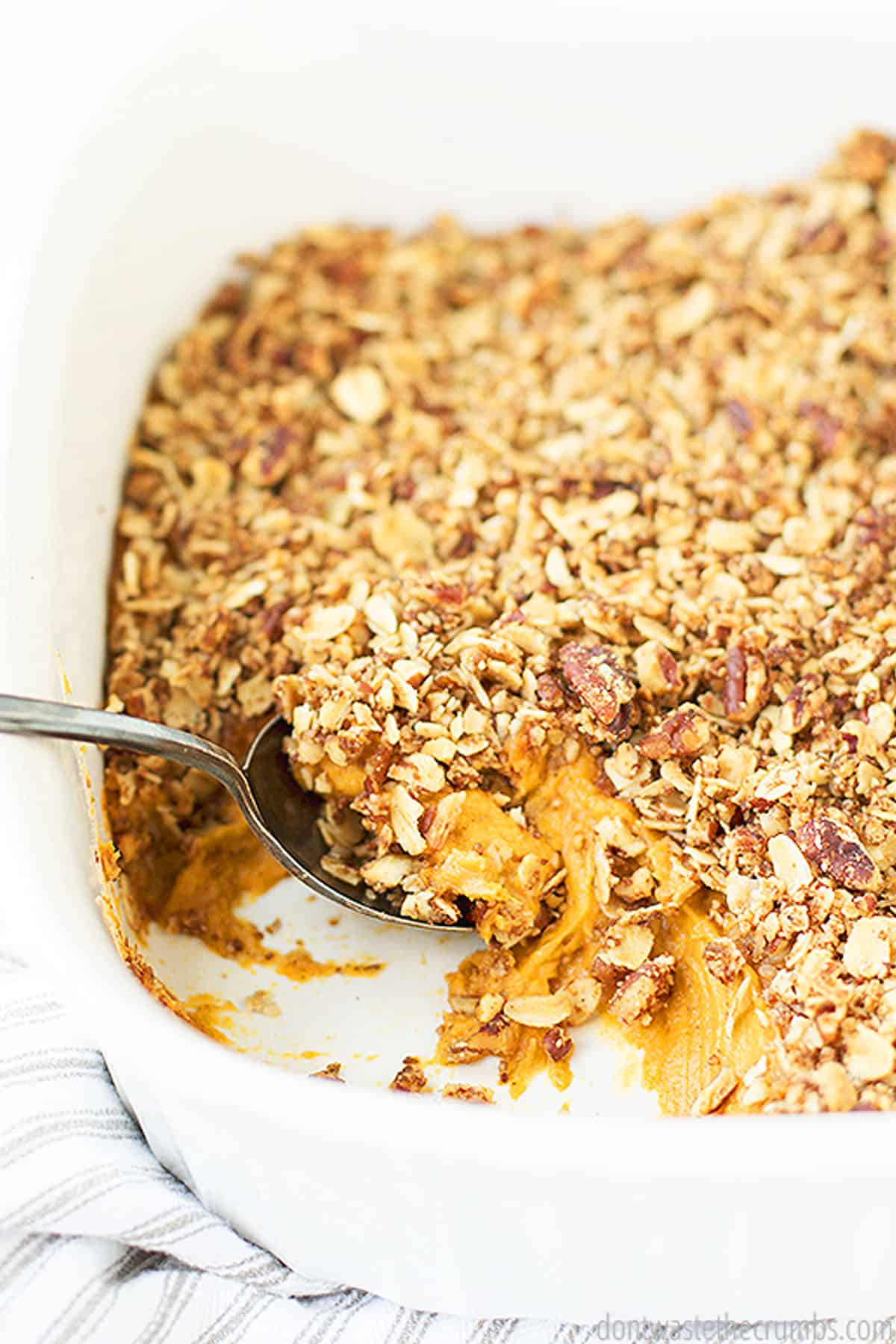
5. Make Homemade Pudding
Traditional pudding is made with eggs, but since you can use flaxseed in lieu of eggs in other recipes, why not use flaxseed in homemade pudding!
For a basic flaxseed pudding recipe:
- Combine 3 Tablespoons flaxseed with ½ cup milk.
- You can add honey or maple syrup to sweeten, or even ¼ tsp vanilla extract and a pinch of salt to flavor.
- Combine everything in a jar and let it sit in the fridge for at least 15 minutes, or overnight. Stir before enjoying!
6. In Lieu of Breadcrumbs
Think of all the recipes that call for breadcrumbs… meatloaf, meatballs, baked macaroni and cheese, crab cakes… Now think of all the ways you can use flaxseeds instead!
- For recipes that use a small amount of breadcrumbs as a binder, like meatloaf and meatballs, swap flaxseeds directly for the breadcrumbs.
- For recipes that use a larger amount of breadcrumbs, swap flaxseed for part of the breadcrumbs.
- I’d start with substituting up to ¼ of the breadcrumbs with flaxseeds, and then taste and adjust as needed.
Here’s how you make your own breadcrumbs.
7. Add to Granola Recipes
The most basic granola recipe is essentially toasted oats and in my opinion, is fairly boring. But when you add other delicious and healthy ingredients like flaxseed, granola becomes incredibly delicious and borderline gourmet!
Start with your favorite granola recipe (strawberry chocolate and cranberry orange and classic cinnamon are the winners in our house) and add 2 tablespoons of flaxseed per 1 cup of oats when you add the other dry ingredients.
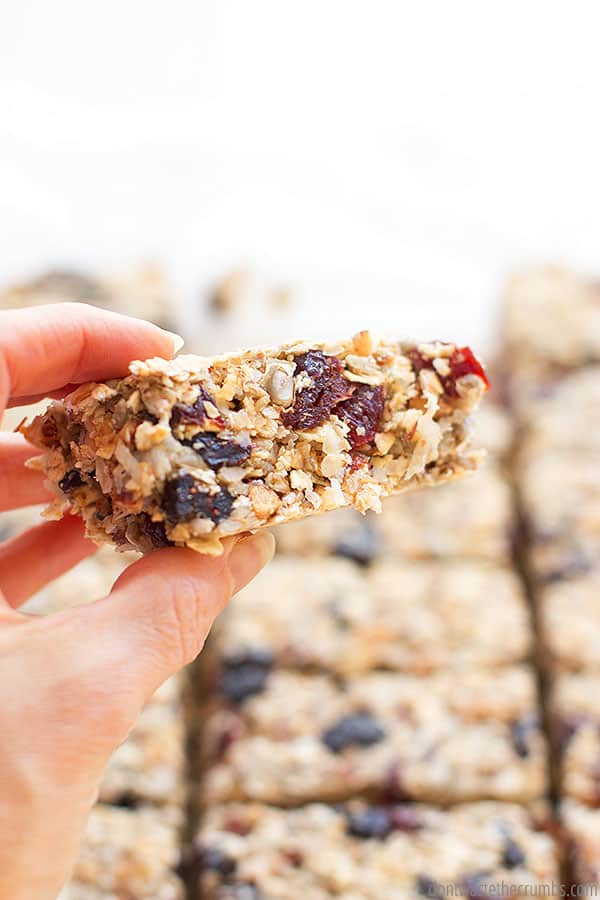
8. Add to Granola Bar Recipes
Since you can use flaxseed as a binder, it only makes sense to add it to foods that are already bound together, like granola bars!
- Start with your favorite recipe (I recommend no bake soft and chewy peanut butter chocolate chips granola bars)
- Add 2 tablespoons of flaxseed per 1 cup of oats.
- Be sure to incorporate the flaxseeds well in any granola bar recipe, so that they’re evenly distributed among the wet ingredients.
9. In Lieu of Oat Bran, Wheat Germ and/or Wheat Bran
Oat bran and wheat germ are often used in baking recipes to add nutritional value, but neither of these ingredients are readily available in most grocery stores. If you’re allergic to wheat or are celiac, wheat germ is not an option. Luckily, you can use flaxseed instead!
Substitute flaxseed for oat bran, wheat germ and/or wheat bran in a 1:1 ratio. A great recipe to give this a try is mix-and-match homemade granola bars.
10. Add to Smoothies
Adding flaxseed to smoothies isn’t a new concept, but it’s so simple and effective that it’s worth repeating.
Add 1-2 tablespoons of flaxseed per 1 serving of smoothie. Flaxseed will absorb some of the liquid as it sits so either drink quickly or add another ¼ – 1/2 cup liquid to the smoothie recipe to compensate.
Tip: This is one way to boost the protein profile in homemade protein smoothies!
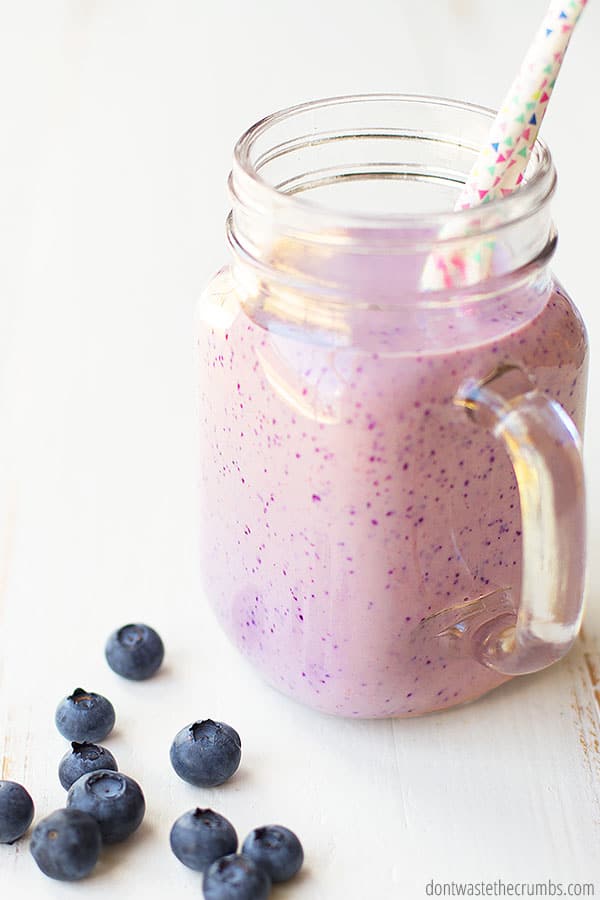
11. Add to Thicken Soups and Stews
When I’m making slow cooker soups each fall, flaxseed fits right in. The amount of flax you can add to your soup will depend on the type of soup it is.
- For soups that are thin and mostly broth, add 1-2 tablespoons per cup of stock.
- For soups that are thicker, like stews or chili, can add 3-4 tablespoons per cup of stock.
12. Sprinkle on Peanut Butter
Anytime you eat peanut butter, you can probably eat flax seeds too. Making a PBJ for lunch? Sprinkle some flaxseed on top.
Topping toast with peanut butter and honey? Sprinkle some flaxseed on top.
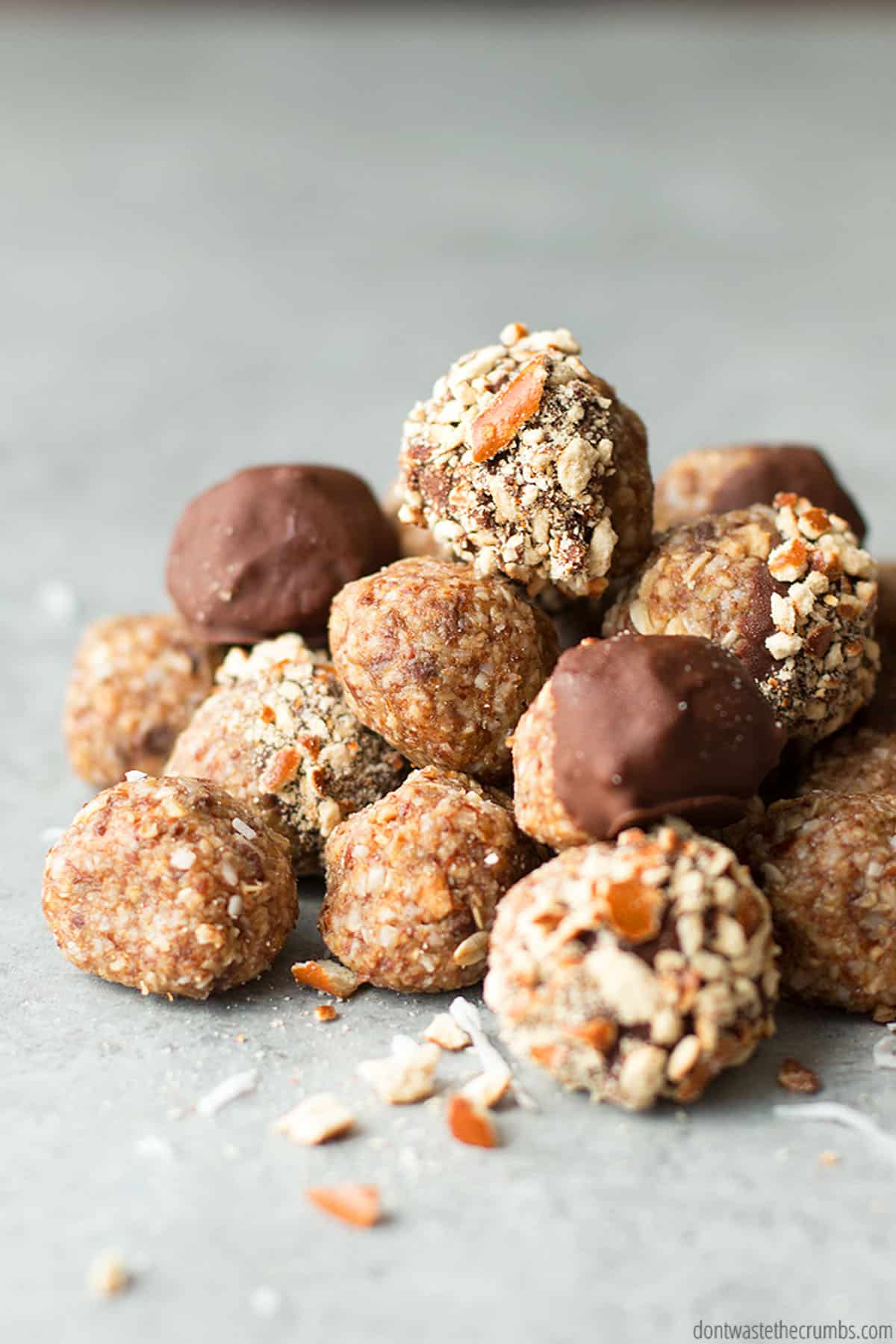
13. Thicken Natural Peanut Butter
You know how the oils in natural peanut butter will separate and rise to the top of the jar? Take the thickening properties of flaxseed and put them to work in your peanut butter jar!
- Start by adding 1 teaspoon of flaxseed per 15-16 ounces of peanut butter.
- Stir it together well and let it sit for at least 15 minutes, but preferably overnight.
- Stir again and if the oil continues to separate more than you’d like, add another 1 teaspoon flaxseed and repeat the process.
- Remember that you can always add more flaxseed to thicken, but it’s harder to add more oil to thin.
Related: How to Make Your Own Nut Butter
14. Add to Cracker Recipes
The most basic homemade cracker recipe is only 3 ingredients, and adding flax is an easy way to boost the nutrition of an otherwise very plain cracker!
Add 1-2 teaspoon per cup of flour to the recipe. You might have to add additional liquid to compensate for the additional dry ingredient.
Another option is to make the cracker recipe as-is, and then sprinkle flaxseed on top just prior to baking.
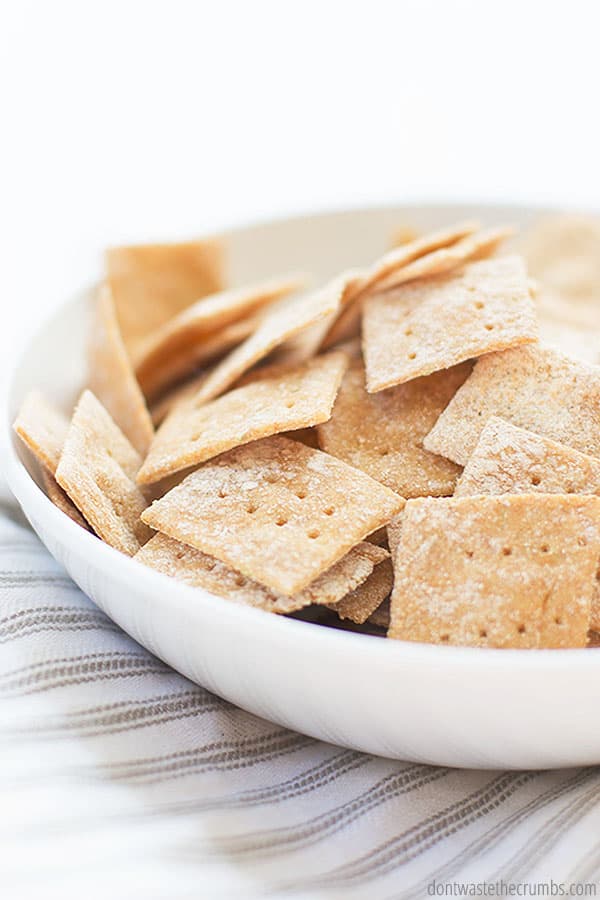
15. Sprinkle on Top of Salads
When mixed with other ingredients, flaxseed looks a lot like ground pepper. And when it’s all mixed up with greens and veggies and homemade salad dressing, you can’t even taste it.
- For a single serving salad, sprinkle ½-1 teaspoon of flaxseed on top. Dress the salad and toss before serving.
- For main meal salads, use 1-2 tablespoons flaxseed.
16. Add to Sauces
Wednesday is pasta night in our house. It’s quick, it’s easy and it’s a “night off” from cooking bigger meals in the kitchen. It’s also a prime opportunity to use flaxseed!
Add 1-2 tablespoons of flaxseed per 1 cup of your favorite pasta sauce (we like meat-based hearty spaghetti sauce). This is also a great way to “doctor up” store-bought pasta sauces.
17. Add to Hummus
If you can get your family to eat beans, then flaxseed is a no-brainer. If there’s a bean-hater in your family, I recommend either chocolate hummus or cookie dough hummus. Both are amazing and will have kids (and husbands!) asking for more.
- Depending on the recipe, you’ll want to add between 1-2 teaspoons of flaxseed to 1 cup of hummus.
- Add less for recipes where a nutty flavor will stand out.
- Add more for recipes that compliment the nutty flavor of flaxseed.
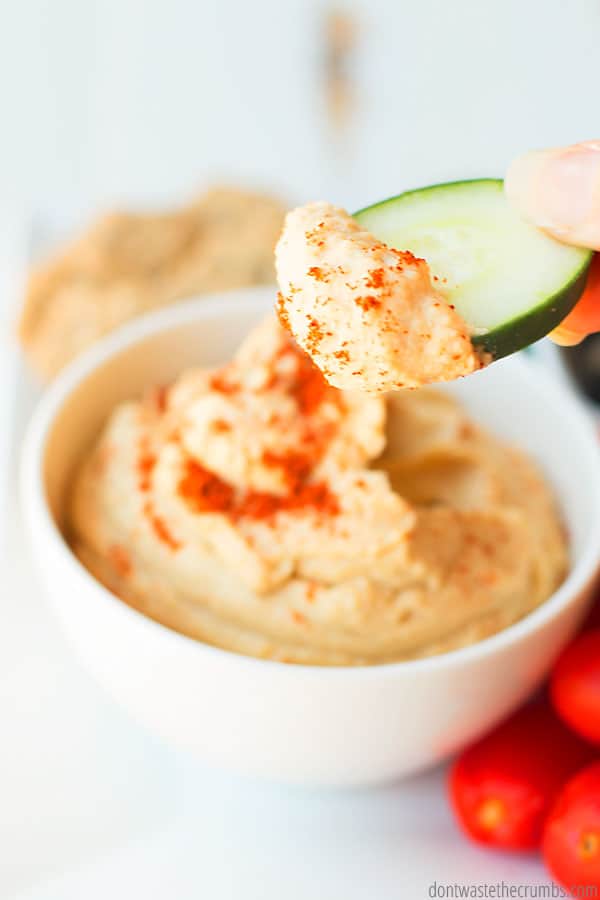
18. In Lieu of Butter and/or Oil
I’m a huge fan of butter, so I don’t know if I’ll ever try this substitution idea or not, but it might be perfect for those who can’t have butter or oil for whatever reason.
Substitute 1 tablespoon butter or oil with 3 tablespoons flaxseed.
Tips for Using Flaxseeds
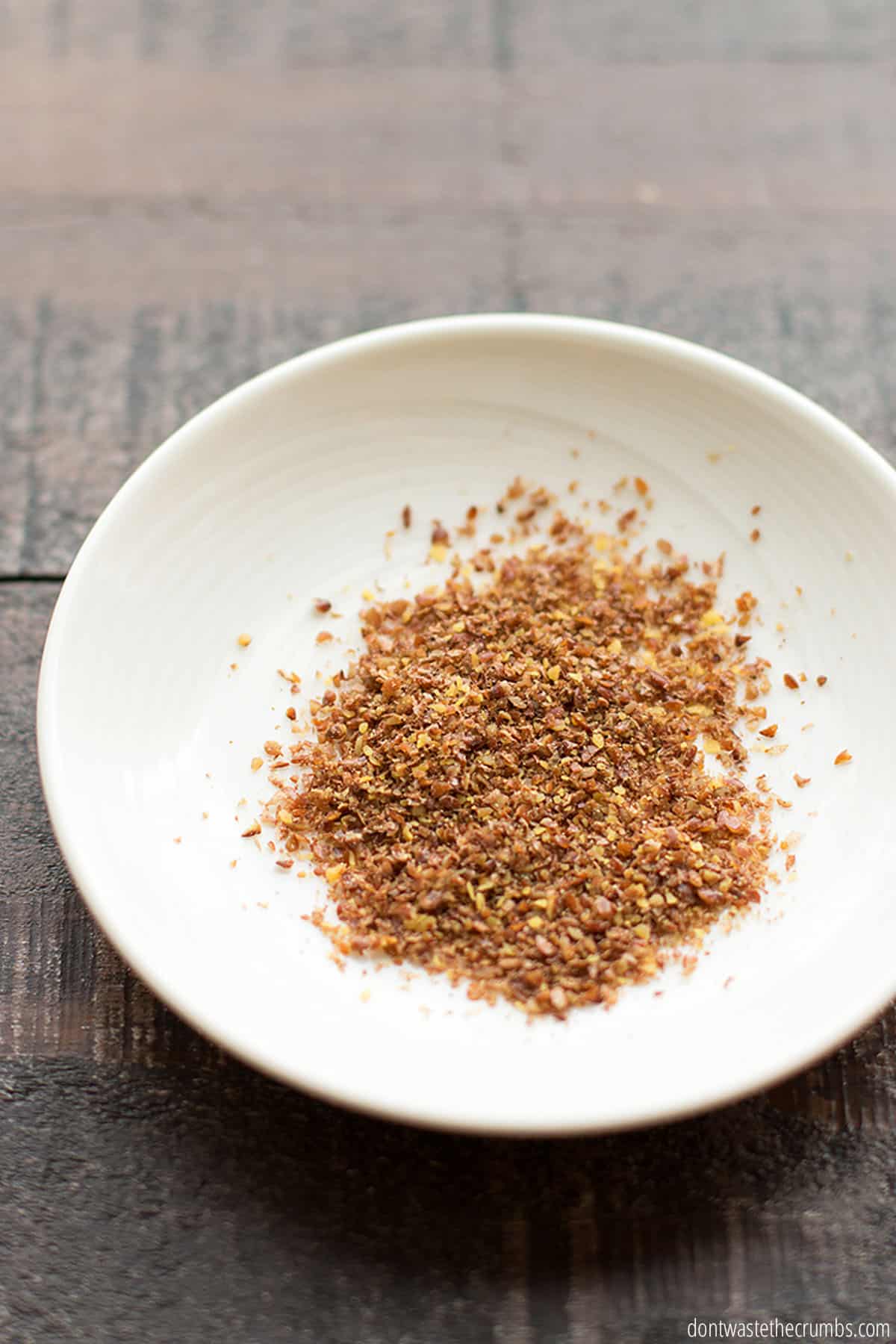
- Flax has a “nutty” flavor, but when you add just a serving or two to a batch of something (or a recipe that already has nuts in it) you can’t really taste it. I’ve made nearly duplicate muffins where one had it – and one didn’t – and neither the kids nor the husband noticed.
- The only difference I personally can see in the final results of a recipe (and it’s probably only because I know I put it in there) is that flaxseed makes it more bind-y.
- You know how eggs make baked goods bind together? Like a glue? Flax seed does the same thing, but in a subtle manner. In a taste test, my family actually preferred the muffins with flax because they tend to be more moist and don’t crumble apart when you take bites.
- When using milled flaxseed as a replacement for flour, my magic ratio is one tablespoon of flax for every cup of flour. I used to take one tablespoon of flour out in order to keep the total amount of dry ingredients the same, but I don’t really do that anymore unless my flax is up to 1/4 cup or more.
- Milled flaxseed doesn’t cost anymore than whole flax seeds, so I like to have this brand of milled flaxseed ready to go (or you can get it off of Amazon too).
FAQs
Yes! As it turns out, flaxseed is also crazy high in fiber, high in protein and considered a superfood with its antioxidant and cancer-fighting nutrients. According to this article, flaxseeds…
Could help you improve digestion, give you clear skin, lower cholesterol, reduce sugar cravings, balance hormones, fight cancer and promote weight loss.
My favorite 18 ways to use flax seeds are listed in this post. Try them as replacements for eggs, in oatmeal or hummus, and more!
Sure can! Flax seeds can be eaten whole or ground. Generally speaking, the term “flaxseed” can mean either the whole seed or the seed ground into a powder. However, the proper term for the ground powder is milled flaxseed.
You can make your own milled flaxseed by putting whole flax seeds in an inexpensive coffee grinder like this one.


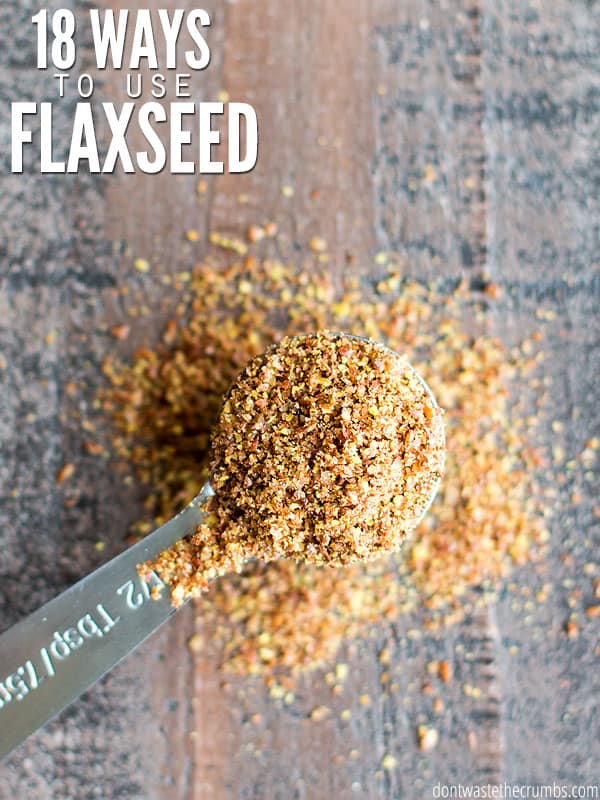
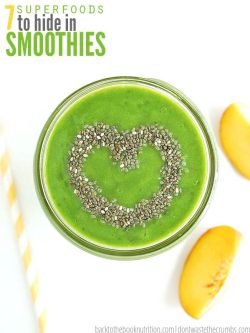
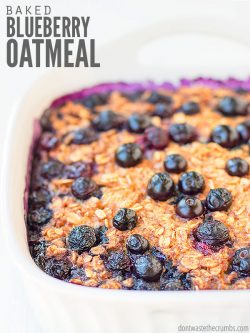
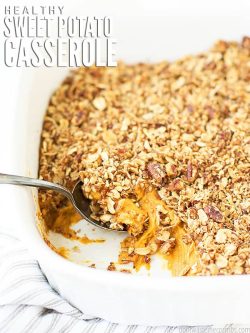
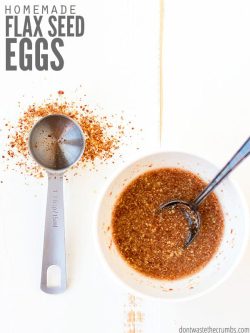

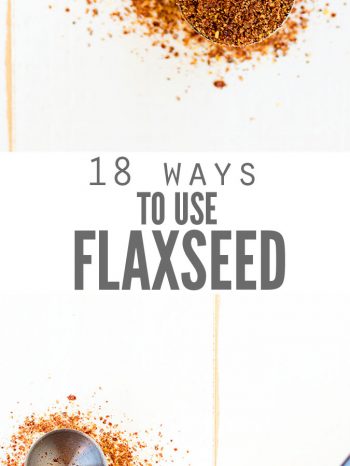
In a recipe for rhubarb crisp it calls for oatmeal can i substitute flax seeds?
Hi Pat! We’ve never done that in a recipe, but let us know how it turns out if you do!
You’re most welcome Riya! Let us know how it goes. 🙂
I too was diagnosed with meibomianitis by my Opthalmologist. He suggested 1 Tbsp flax seed oil per day. I wanted to add more ground flax to my diet. I will put your list on my fridge to chose an idea daily until it becomes habit! Thank you for your article and thanks for the Dr. Axe link.
Thank You SO VERY MUCH! Hope it will counter the effects of DRY EYE after cataract surgery;-)
–Gerry
I wish you all the luck and would love to hear about your results!
All the best of luck!
Flax doesn’t help the dry eye I experience from Sjogrens, but perhaps it will help you.
I typically eat 2 Tbsp a day, often either in my refrigerator oatmeal or in cocoa brownies. I also love my ground flax as something nutty to dip my strawberries into, when they’re in season.
Fran, I am totally going to try dipping my strawberries in this. Thanks for sharing!
I put a tablespoon of flax in a dessert dish and roll bite size pieces of melons and strawberries
I put it in my Greek yogurt that I have for breakfast just add a spoonful